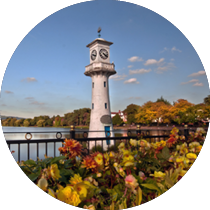
A common feature of our architectural design is that we try to refrain from revealing everything immediately. We encourage the user to go on a ‘journey of discovery’ through the building. From the very moment they approach the entrance, through to navigating the circulation paths and experiencing each space in its own right, and then perhaps culminating in the architecture framing a beautiful view of a particular tree in the garden.
Architectural features that are designed for your homes and offices can morph from one space to the next, sculpting light, space and volume, creating a sensory journey for the building’s occupants. The considered use of vertical and horizontal planes and the controlled and purposeful carving of light versus shadow, can serve to prompt and inspire the user as they travel through a built space.
There is a strong connection between space (the physical) and experience (the emotional). Architecture has the power to stir these emotions and fundamentally has a responsibility to do so.
GTA considers architecture not as the building of materials, but the sculpting of space into a series of discoveries, of which the raw building blocks are rhythm, focus, contraction and expansion, darkness, light, scale, material, and colour.

How can architecture take the user on a journey of discovery?
One of the first things we look at in the early stages of design is context. Where are the views? How will the user approach the entrance? Can we guide the user along a secret path with a subtle or unassuming entrance that opens into a large double-height courtyard. Or would it be more appropriate, within its unique setting, to highlight the entrance with a clearly defined and well lit canopy and an abundance of planting. Entering through a huge glass pivot door, one can be gently directed to either side of a rusted steel wall, leading slowly to the open plan rear of the living space, with small gaps in the fabric offering sneak glimpses only of the garden, until the full view is discovered.
Daylight control, low or tall ceiling heights, wide or narrow passageways, textures and materials, the scale of the doorways, circulation routes, landscaping and sound- all of these elements combine to create a sense of place, allowing the user’s mind to move forward in anticipation.
Considered architecture is all about the journey and how our senses relate to the environment. Rather than expose the surroundings, the sky, or indeed other rooms within the structure in a clinical manner, we aim to invite the occupant to discover these elements. In doing so, we create calmness, joy, expectation and drama.





